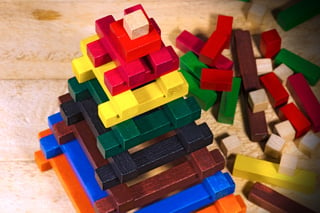What do Dynamic Value Hierarchies and Power Windows Have in Common?


Do you ever wonder how power windows on cars and trucks came about? Try to buy a vehicle with hand crank windows today. Good luck with that.
The story of power windows is also a story about value hierarchies. Value hierarchies are graphic depictions of your value proposition. Value hierarchies are usually organized as pyramids with three tiers of value:

To construct a value hierarchy, you position your product features, benefits, capabilities, and services at each respective tier.
POWER WINDOWS: A MINI-CASE STUDY
There are excellent lessons to be learned about product evolution and evolving forms of value in the history of automobile power windows. To set this up, I’ll provide a brief chronology and history lesson:
| 1940 | Power windows first introduced on the Packard 180 Series | |
| 1941 | Power windows available on Lincoln Custom limos and sedans and Cadillacs | |
| 1946-1960 | Broader availability on other high-end brands and models | |
| 1960 | First year that power windows came as standard equipment (Cadillac Fleetwood) | |
| 1960-1980 | Evolution of power window technology and broader availability on mid-priced cars | |
| 1980s-Today | Power windows are included in most models as standard equipment | |
| 2008 | Many manufacturers eliminate hand crank windows as an option. |
What are our takeaways from this chronology, which are similar for all automobile accessories?
- New forms of value are continuously created as technological innovations find commercial applications. Today, think “digital” for the best examples.
- Value that buyers were willing to pay for early on becomes embedded in later versions of products and services as a standard features and capabilities...at no premium price.
- Value is driven by continuous innovation in your business operationally, in marketing, and in product and service development.
- Early innovators that do not continue to innovate to support value creation can disappear from the market, like Packard, the innovator of power windows in 1940 who which left the market in 1956.
What’s important about this history is very relevant to all organizations as you manage your value hierarchies today.
A value hierarchy is a simple but powerful model that helps organizations understand how they create value for their customers (or clients, or patients, or whomever they serve).
Here’s an example of a value hierarchy from a B2B business:

The place to start in constructing a value hierarchy is at the bottom tier: “Meet Competition.” “Meet Competition,” or “Table Stakes,” are capabilities that your organization must offer in order to be considered a viable option by buyers. Your buyers can help you understand what makes up “Table Stakes” if you ask them to evaluate all those areas where you believe that you create value, rating the importance and uniqueness of each area.
There is one big challenge with management of value over time: value hierarchies are dynamic, not static.
A business can be great at product development or sourcing, but over time:
- Your capabilities can wane and your ability to develop and/or source truly unique, innovative products can deteriorate, and what you once performed well is no longer a capability.
- Your buyer no longer sees products as a competitive differentiator. When product portfolios or service offerings become lookalikes, your buyers may be looking to buy based on other criteria, such as the buying experience, your expertise, or many other differentiating factors.
Our power window example provides a parallel challenge: areas where you were once competitive, over time, can become table stakes. Power windows, over time, migrated down the value hierarchy from a “WOW” to a “Beat Competition” to “Table Stakes” and then to “Meet Competition.”
This is no time to rest on your laurels as we know technology can become the great leveler and features that were once reserved for the high-end buyer now become available to everyone. You know that from your personal banking experience, for example, where today any community bank can offer the same mobile check deposit features as the largest banks.
That’s the challenge of value hierarchies--they are dynamic and demand your constant attention.
Here’s how to apply this lesson:
- A best practice is to evaluate your value proposition continuously with both your existing buyers and those with whom you want to do business. Don’t assume they have the same perception of value. This is critical insight gathering.
- Since value is the living heart of your organization, an annual review of your value hierarchy and value proposition should be part of your business strategy and annual business plan.
- As part of your insights work, try to understand how your value hierarchy compares with that of your major competitors. This might seem hard, but you can do this relatively easily by using word clouds. If you missed how to do this: check out my earlier blog on this subject.
Your organization thrives because of the value you create for your buyers. A value hierarchy graphically helps your organization understand and align with the value they create. Time to get busy on a refresh?
This article is part of a series where I share practical experience learned over 25 years as a Marketing executive. I’m happy to engage with you if you want to expand on these ideas—and especially if you have a need, or know a company that does.
Topics: Value Proposition, Customer Value Alignment, Value Creation
Thu, May 18, 2017Featured Chief Outsider
The Chief Outsider
Related Articles

.png?width=1500&height=398&name=CO_Corporate%20Logo%202021_4C_HOR_FNL-1%20(1).png)

